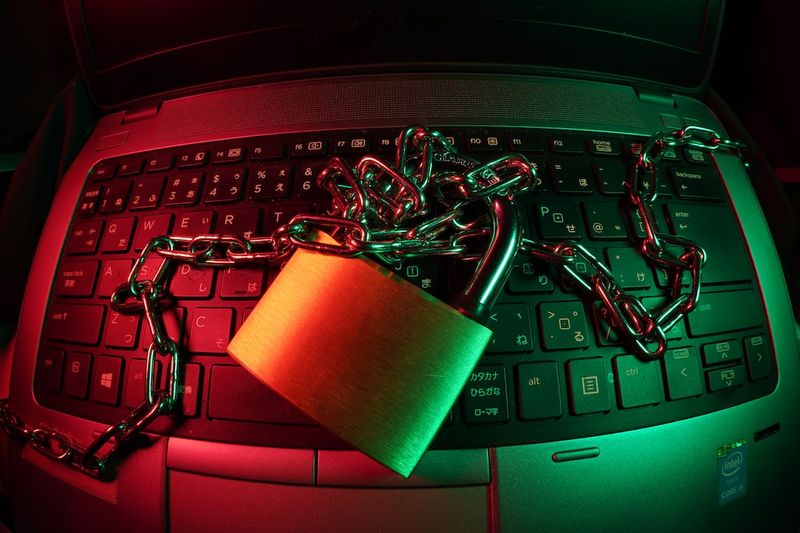Fraud & Identity Theft Operation ‘Duck Hunt’: Qakbot Malware Disrupted, $8.6 Million in Cryptocurrency Seized
Overview
In a major cybercrime operation, law enforcement authorities have successfully dismantled the Qakbot cybercrime operation, which infected over 700,000 computers worldwide with ransomware and financial fraud attacks. The operation, dubbed “Duck Hunt,” involved the takeover of the Qakbot infrastructure and the distribution of a software utility to automatically uninstall the Qakbot malware from infected machines. The takedown was the largest U.S.-led financial and technical disruption of a botnet, with the FBI gaining access to Qakbot infrastructure and identifying more than 700,000 infected computers, including 200,000 in the United States.
The Qakbot disruption is a significant achievement in the fight against cybercrime, as it cripples one of the most highly structured and multi-layered botnets used for cybercrime activities. Qakbot is controlled by an unnamed cybercriminal organization and has been used to target critical industries worldwide through spam email messages containing malicious attachments or hyperlinks. It has also served as an initial means of infection for ransomware groups, who extort victims and seek ransom payments in cryptocurrencies like Bitcoin.
The Takedown
To disrupt the Qakbot botnet, the FBI redirected Qakbot botnet traffic to and through servers controlled by the agency. This allowed the FBI to instruct infected computers in the United States and other countries to download a file created by law enforcement that would uninstall the Qakbot malware. Through this approach, the FBI was able to neutralize the botnet and protect the infected machines from further harm.
The takedown operation was a multinational effort, involving actions in the United States, France, Germany, the Netherlands, the United Kingdom, Romania, and Latvia. By dismantling the Qakbot infrastructure and seizing more than $8.6 million in illicit cryptocurrency profits, law enforcement has dealt a significant blow to the cybercriminal organization behind Qakbot.
Impact and Lessons Learned
The Qakbot cybercrime operation had a far-reaching impact, with victims ranging from financial institutions on the East Coast to a critical infrastructure government contractor in the Midwest to a medical device manufacturer on the West Coast. The operation generated approximately $58 million in ransoms paid by victims between October 2021 and April 2023.
The takedown of Qakbot highlights the continued threat posed by botnets and the need for proactive measures to disrupt and dismantle these networks. It also emphasizes the importance of international cooperation in fighting cybercrime, as evidenced by the involvement of multiple countries in the operation. The success of Operation Duck Hunt serves as a testament to the effectiveness of such collaborations.
Internet Security and Personal Measures
While law enforcement agencies have made significant strides in combating cybercrime, individuals and organizations must also take responsibility for their own internet security. This includes implementing strong passwords, regularly updating software and operating systems, using reputable antivirus software, and being cautious when opening email attachments or clicking on suspicious links. It is crucial to remain vigilant and stay informed about the latest cybersecurity threats.
Additionally, the use of cryptocurrency in cybercrime highlights the need for greater regulation and oversight of these digital assets. Governments and financial institutions should work together to establish frameworks that ensure transparency and prevent illicit activities. This will help in the fight against cybercriminals who rely on cryptocurrencies to facilitate their operations.
Editorial: The Rise and Fall of Operation Duck Hunt
A Major Victory Against Cybercrime
The takedown of the Qakbot cybercrime operation, codenamed Operation Duck Hunt, represents a major victory against cybercriminals who exploit the vulnerabilities of computer systems for financial gain. This multinational effort, led by the FBI, highlights the effectiveness of international cooperation in combating cybercrime and serves as a model for future operations.
Qakbot was a sophisticated and highly structured botnet that infected hundreds of thousands of computers worldwide. Its operators targeted critical industries, extorted victims with ransomware attacks, and amassed significant profits in cryptocurrencies. By dismantling the Qakbot infrastructure and seizing illicit cryptocurrency funds, law enforcement has dealt a significant blow to the cybercriminal organization behind Qakbot.
The Importance of Collaboration
The success of Operation Duck Hunt underscores the importance of collaboration in the fight against cybercrime. Cybercriminals operate across borders, making it essential for law enforcement agencies and governments to work together to disrupt and dismantle these networks. The involvement of multiple countries in the operation demonstrates the effectiveness of such collaborations and sets a precedent for future joint efforts.
The Need for Continued Vigilance
While the takedown of Qakbot is a significant achievement, it is important to remember that cybercrime remains a persistent and evolving threat. As technology advances, so do the tactics and techniques used by cybercriminals. It is crucial for individuals, organizations, and governments to remain vigilant, stay informed, and adapt their security measures accordingly.
Conclusion: Securing a Safer Digital Future
Operation Duck Hunt represents a significant step forward in the fight against cybercrime. It serves as a reminder of the importance of collaboration, both among law enforcement agencies and between governments, in combating this global threat. While the battle against cybercrime may never be fully won, operations like Duck Hunt demonstrate that by working together, we can disrupt and dismantle the networks that enable these criminal activities. It is imperative that we continue to invest in cybersecurity measures, adopt best practices, and remain vigilant in our efforts to secure a safer digital future.

<< photo by Summer Li >>
The image is for illustrative purposes only and does not depict the actual situation.
You might want to read !
- MOVEit: An Avoidable SQL Injection Disaster
- PurFoods Mom’s Meals Data Breach: A Lapse in Security Endangers 1.2 Million Consumers’ Social Security Numbers
- The Rise and Fall of Qakbot: Unraveling a Massive Malware Network
- The Mom’s Meals Data Breach: Understanding the Impact and Taking Action
- “Examining China’s Advanced Cyber Espionage Tactics in the Barracuda ESG Zero-Day Attack”
- Building Trust and Privacy: Exploring the Potential of a Decentralized, Blockchain-Based Messaging Network
- The Rise of Online Scams: UN’s Warning for Southeast Asia
- Rise of Hundreds of New LockBit 3.0 Ransomware Variants: Unveiling the Builder Leak
- The Kroll Data Breach: Unveiling the Vulnerability of SIM Swapping Attacks
- The Ongoing Threat of Dark Frost: Examining the Impact of Devastating DDoS Attacks on the Gaming Industry




